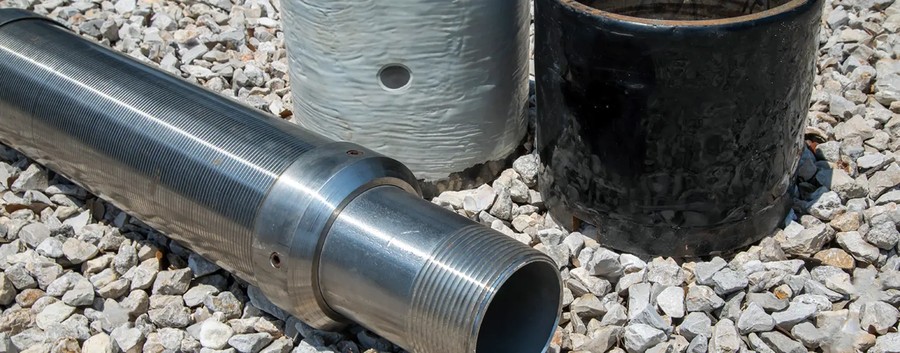
Erosion is a natural process that shapes the Earth’s surface over time, but when it occurs at an accelerated rate due to human activities or environmental changes, it can lead to severe consequences such as land degradation, loss of fertile soil, and damage to infrastructure. To mitigate these risks, erosion testing has become an essential practice across various industries. This article delves into the concept of erosion testing, its importance, methods, applications, and future trends.
What is Erosion Testing?
Erosion testing refers to the systematic evaluation of materials, surfaces, or landscapes to assess their resistance to erosion caused by water, wind, or other forces. It involves simulating real-world conditions in controlled environments to measure how quickly and extensively erosion occurs under specific circumstances. The goal is to identify vulnerabilities, predict potential damage, and develop strategies to minimize erosion’s impact.
Erosion testing is not limited to natural landscapes; it also plays a critical role in industries like construction, agriculture, transportation, and manufacturing. For instance, engineers test building materials for durability against weathering, while farmers analyze soil stability to optimize crop yields.
Why is Erosion Testing Important?
1. Environmental Protection
Accelerated erosion can lead to habitat destruction, sedimentation in water bodies, and loss of biodiversity. By conducting erosion tests, scientists and policymakers can better understand the factors contributing to erosion and implement measures to protect ecosystems.
2. Infrastructure Safety
Roads, bridges, dams, and buildings are often exposed to erosive forces. Regular erosion testing helps ensure that these structures remain safe and functional over time, reducing the risk of costly repairs or catastrophic failures.
3. Agricultural Sustainability
Soil erosion is one of the biggest threats to agricultural productivity. Farmers rely on erosion testing to determine the best practices for preserving topsoil, enhancing water retention, and maintaining nutrient levels.
4. Cost Efficiency
Identifying erosion-prone areas early allows organizations to take preventive actions, saving money on repairs and replacements. Proactive testing minimizes long-term expenses associated with erosion-related damages.
Methods of Erosion Testing
There are several methods used to conduct erosion testing, each tailored to different scenarios and objectives. Below are some of the most common techniques:
1. Rainfall Simulators
Rainfall simulators replicate natural rainfall patterns to study how water affects soil stability. These devices allow researchers to control variables such as intensity, duration, and droplet size, providing valuable insights into runoff rates and soil detachment.
Applications:
- Assessing soil conservation techniques.
- Evaluating vegetation cover effectiveness in preventing erosion.
2. Wind Tunnel Tests
Wind tunnel tests simulate wind erosion by exposing samples to varying wind speeds and directions. This method is particularly useful for studying desertification, coastal erosion, and dust storms.
Applications:
- Designing windbreaks and barriers.
- Analyzing the impact of climate change on arid regions.
3. Jet Erosion Tests (JET)
In jet erosion tests, a high-pressure water jet is directed at a sample to measure its erodibility. JET provides quantitative data about material strength and resistance to hydraulic forces.
Applications:
- Testing embankments and levees.
- Evaluating riverbank stability.
4. Flume Experiments
Flumes are artificial channels used to mimic water flow conditions. Researchers place soil or sediment samples inside flumes to observe erosion patterns caused by flowing water.
Applications:
- Studying streambank erosion.
- Optimizing drainage systems.
5. Field Monitoring
Field monitoring involves installing sensors and instruments in real-world settings to collect data on erosion processes over extended periods. This approach offers unparalleled accuracy but requires significant resources.
Applications:
- Long-term ecological studies.
- Infrastructure maintenance planning.
Industries That Benefit from Erosion Testing
1. Construction
Construction projects frequently encounter challenges related to soil movement and foundation instability. Erosion testing ensures that foundations, retaining walls, and slopes are designed to withstand erosive forces.
2. Transportation
Highways, railways, and airports are susceptible to erosion, which can compromise safety and functionality. Engineers use erosion testing to design robust roadbeds and drainage systems.
3. Agriculture
Farmers depend on erosion testing to maintain soil health and maximize yields. Techniques like contour plowing and terracing are informed by erosion data.
4. Mining
Mining operations disturb large areas of land, making them highly prone to erosion. Erosion testing helps mining companies comply with environmental regulations and restore degraded sites.
5. Energy Sector
Hydropower plants, oil pipelines, and offshore platforms face unique erosion risks. Testing ensures these facilities operate safely and efficiently.
Challenges in Erosion Testing
While erosion testing offers numerous benefits, it comes with its own set of challenges:
1. Complexity of Natural Processes
Erosion is influenced by multiple interacting factors, including climate, geology, vegetation, and human activity. Accurately replicating these interactions in laboratory settings can be difficult.
2. Resource Constraints
Field-based erosion testing requires substantial investment in equipment, personnel, and time. Smaller organizations may struggle to allocate sufficient resources.
3. Data Interpretation
Interpreting erosion test results often requires specialized knowledge. Misinterpretations can lead to ineffective solutions or unnecessary expenditures.
4. Climate Change Uncertainty
Rising global temperatures and shifting precipitation patterns make it harder to predict future erosion risks. Testing protocols must continually adapt to account for these uncertainties.
Innovations and Future Trends in Erosion Testing
As technology advances, so too does the field of erosion testing. Here are some emerging trends shaping its future:
1. Remote Sensing Technologies
Satellite imagery and drones equipped with advanced sensors provide detailed information about erosion patterns across vast areas. This technology enables more comprehensive assessments without requiring physical access to remote locations.
2. Artificial Intelligence (AI)
AI algorithms can analyze massive datasets generated by erosion tests to identify patterns and predict outcomes. Machine learning models enhance the precision of erosion forecasts, helping stakeholders make informed decisions.
3. Biodegradable Materials
Researchers are exploring biodegradable materials that resist erosion while promoting ecological restoration. These innovations could revolutionize industries like construction and agriculture.
4. Integrated Approaches
Future erosion testing will likely involve integrating multiple methods—such as combining rainfall simulators with flume experiments—to capture a holistic view of erosion dynamics.
Conclusion
Erosion testing is a vital tool for understanding and combating the adverse effects of erosion on both natural and built environments. Whether you’re a farmer seeking to preserve your soil, an engineer designing resilient infrastructure, or a policymaker aiming to protect ecosystems, erosion testing provides invaluable insights. As new technologies emerge and our understanding of erosion deepens, the field will continue to evolve, offering even more effective ways to safeguard our planet.
By prioritizing erosion testing, we can strike a balance between development and sustainability, ensuring a brighter future for generations to come.








